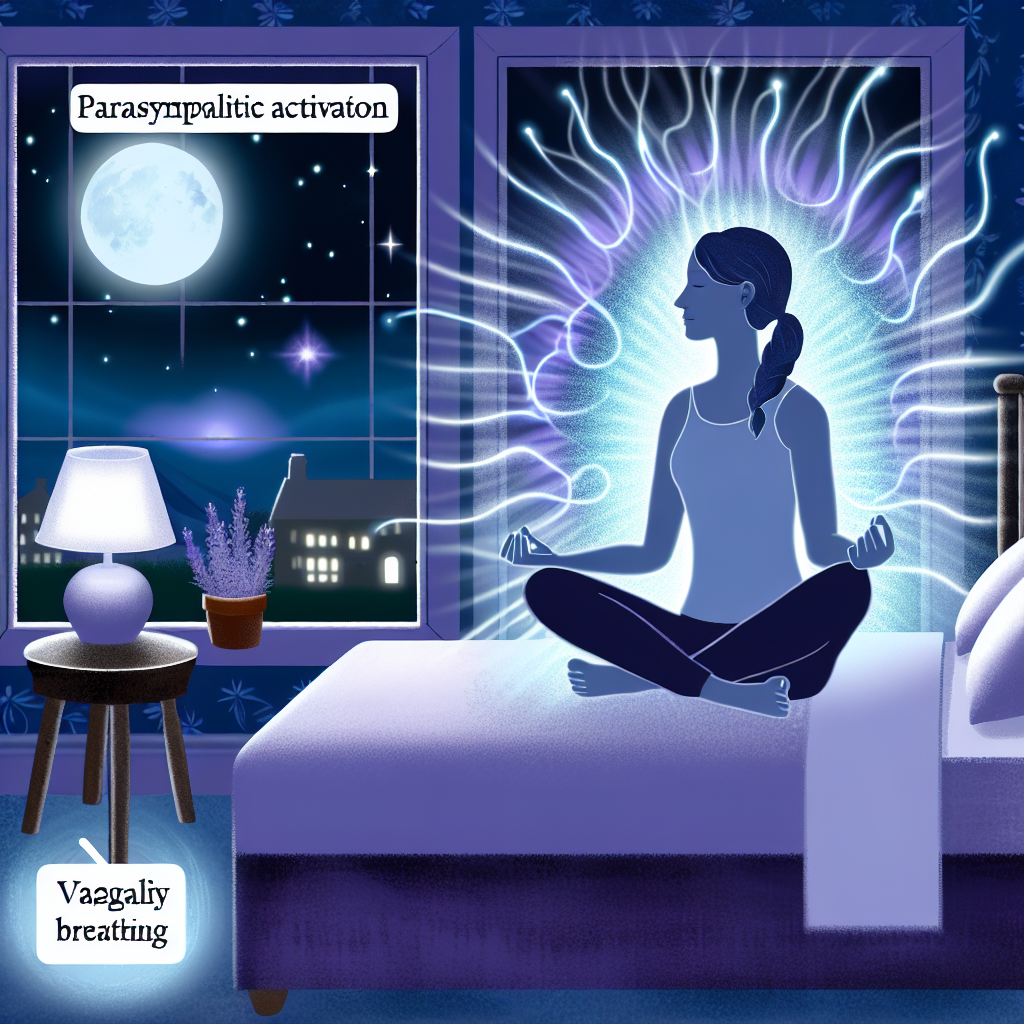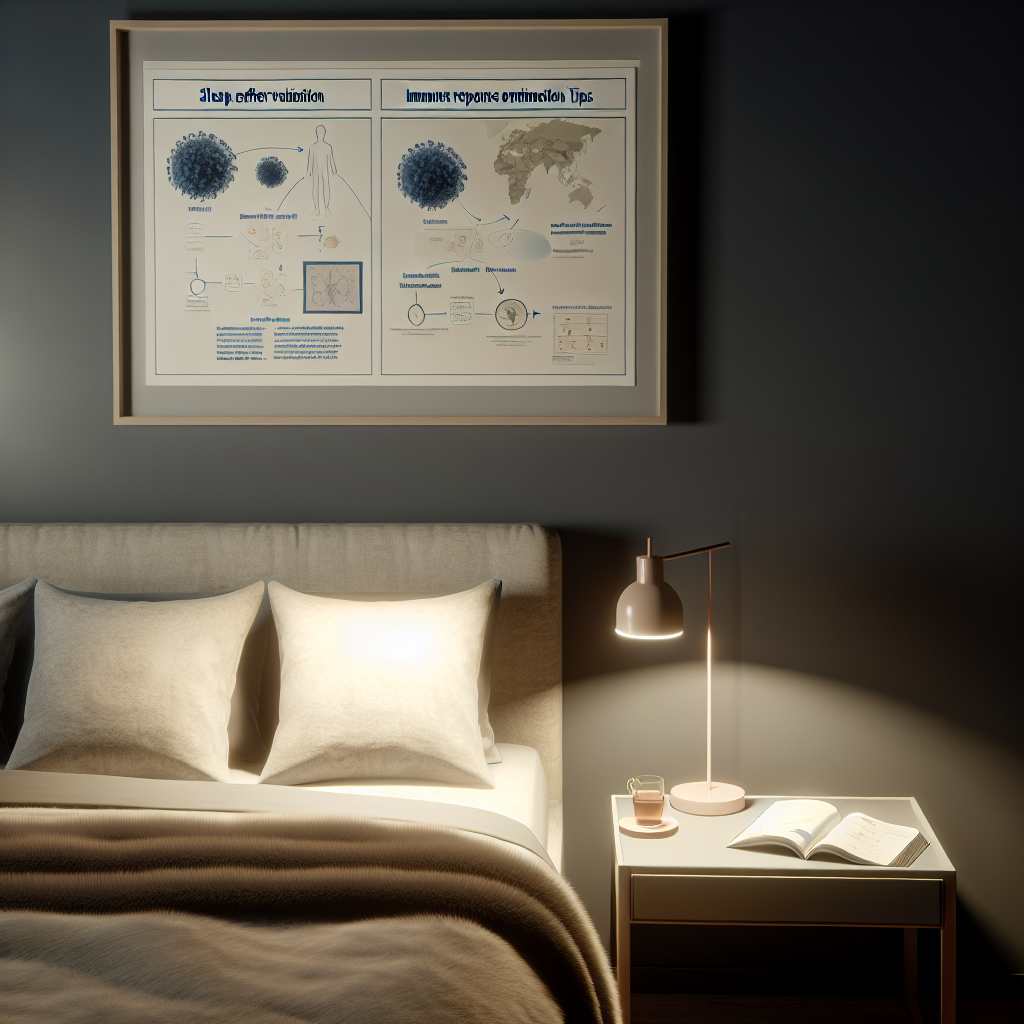Parasympathetic Activation Sequences: Vagal Breathing Before Bed
Sleep is not just a time to rest—it’s a vital function that supports nearly every aspect of physical health and mental wellbeing. Yet, millions of individuals, from adolescents to older adults, find themselves battling the unwelcome grip of insomnia or restless sleep. One of the key factors underlying sleep disturbances is an overactive stress response system, governed by the sympathetic nervous system—the body’s “fight or flight” mode. Conversely, the parasympathetic nervous system plays the role of calming the body, counterbalancing stress by promoting rest, digest, and recovery functions.
In recent years, scientists and medical professionals have focused increasing attention on how to leverage the parasympathetic nervous system to promote better sleep. One practical and scientifically supported strategy is vagal breathing—a focused breathing technique that stimulates the vagus nerve, thereby triggering the parasympathetic system. The vagus nerve, the longest cranial nerve in the body, has vast influence over internal organ functions, including heart rate, digestion, and even mood regulation. When activated deliberately through specific breathing sequences, it can act as a powerful gateway to relaxation.
Sleep Science Unlocks the Power of the Parasympathetic Nervous System
Numerous studies continue to validate the power of vagal breathing in activating the parasympathetic nervous system and improving sleep. Research published in Frontiers in Human Neuroscience found that slow breathing techniques significantly increase heart rate variability (HRV), a key biomarker that indicates vagal tone and parasympathetic activity. High HRV is consistently associated with improved stress resilience and better sleep patterns ([Frontiers](https://www.frontiersin.org/articles/10.3389/fnhum.2017.00460/full)).
Another study published in the Journal of Clinical Psychology explored the effects of diaphragmatic breathing on anxiety-related insomnia. Results showed that participants practicing slow, deep breathing for 15 minutes before bedtime experienced faster sleep onset latency, reduced nighttime awakening, and greater overall sleep efficiency compared to control groups ([Journal of Clinical Psychology](https://onlinelibrary.wiley.com/doi/10.1002/jclp.20603)).
The mechanism behind this improvement lies in the direct stimulation of the vagus nerve. When inhalation and exhalation patterns are consciously regulated, particularly focusing on longer exhalations, vagal afferent fibers within the chest and abdomen become activated. This activation sends calming signals to the brain, reducing the stress response and lowering heart rate and blood pressure—key factors in facilitating the transition into sleep.
Proven Benefits for Kids, Teens, and Adults Alike
Adolescents and children, often in a state of hyperarousal due to constant screen exposure or academic stress, can especially benefit from vagal breathing. A review published in Mindfulness journal emphasized that mindfulness-based programs integrating breathwork improved emotional regulation and sleep in school-age children ([Mindfulness](https://link.springer.com/article/10.1007/s12671-016-0474-8)). Guided breathing interventions helped reduce nighttime restlessness and taught children how to self-soothe using simple breathing cues.
From a neurological perspective, stimulating the vagus nerve has also been shown to increase levels of gamma-aminobutyric acid (GABA), a neurotransmitter critical for calming neural activity and initiating sleep. In patients suffering from chronic stress, the brain often becomes deficient in GABA, causing a state of hypervigilance and insomnia. Vagal breathing helps restore this balance naturally.
Best of all, this technique is non-invasive, cost-free, and easily integrated into daily routines. Unlike other sleep aids that carry the risk of dependency or side effects, vagal breathing encourages the body’s innate ability to heal and restore itself. Through consistent practice, users report not only improved sleep but also enhanced mood, better focus during the day, and a greater sense of inner peace.
How to Do Vagal Breathing: A Step-by-Step Bedtime Guide
Initiating a parasympathetic activation sequence through vagal breathing can take as little as 5–10 minutes and should be done in a quiet, dimly lit environment—ideally right before lying down to sleep. Here’s a basic protocol:
- Position: Lie on your back or sit comfortably with your spine straight. Place one hand on your chest and one on your abdomen.
- Inhalation: Breathe in slowly through your nose for a count of 4, ensuring that your abdomen—not your chest—rises.
- Pause: Briefly hold the breath for 2 seconds.
- Exhalation: Gently exhale through your mouth for a count of 6 or 8, making it longer than your inhalation.
- Repeat: Continue this cycle for 5–10 minutes, focusing your attention entirely on the movement of your breath and the sensation of calm.
This method can be paired with calming music, guided meditations, or essential oils like lavender for even greater effect. Over time, this ritual becomes a signal to the body that it is safe and time to sleep.
Conclusion: Rest Better by Breathing Smarter
As medical understanding of the autonomic nervous system continues to evolve, so too does our appreciation for ancient practices like breath control. Parasympathetic activation sequences, particularly through targeted vagal breathing techniques, offer an elegant and accessible solution for improving sleep health. Whether you’re a parent helping your child transition to bedtime, a working adult combating the stress of daily life, or an older adult navigating age-related changes to sleep, this simple method can transform sleep hygiene.
By regularly stimulating the vagus nerve with deep, rhythmic breathing before bed, we not only enhance our ability to fall asleep but also improve the depth and quality of our rest. In doing so, we lay the groundwork for stronger immunity, sharper cognition, and a calmer, more balanced emotional state. The path to truly restorative sleep may be as simple as learning to breathe with intention.
References
- Zaccaro, A., et al. (2018). How Breath-Control Can Change Your Life: A Systematic Review on Psycho-Physiological Correlates of Slow Breathing. Frontiers in Human Neuroscience. Read Study
- Conrad, A., & Roth, W. T. (2007). Muscle relaxation therapy for anxiety disorders: It works but how? Journal of Anxiety Disorders. Read Study
- Zoogman, S., et al. (2015). Mindfulness Interventions with Youth: A Meta-Analysis. Mindfulness. Read Study
- Brown, R. P., & Gerbarg, P. L. (2005). Sudarshan Kriya Yogic Breathing in the Treatment of Stress, Anxiety, and Depression: Part II. Journal of Alternative and Complementary Medicine. Read Study
Concise Summary:
Discover how vagal breathing can activate your parasympathetic nervous system and transform your sleep. This simple, drug-free technique can help individuals of all ages, from children to adults, overcome insomnia and achieve better, more restorative sleep.

Dominic E. is a passionate filmmaker navigating the exciting intersection of art and science. By day, he delves into the complexities of the human body as a full-time medical writer, meticulously translating intricate medical concepts into accessible and engaging narratives. By night, he explores the boundless realm of cinematic storytelling, crafting narratives that evoke emotion and challenge perspectives.
Film Student and Full-time Medical Writer for ContentVendor.com




